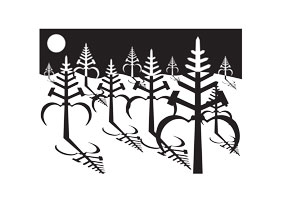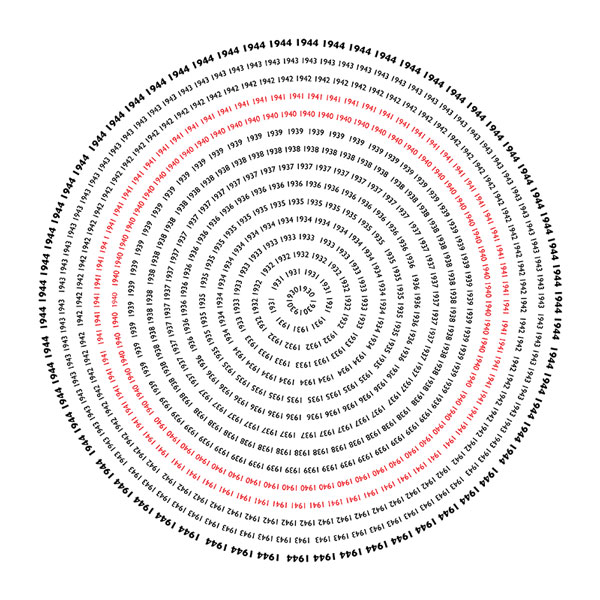
Camp inmates had to work in the surrounding forests in temperatures of -40 degrees Celsius, cutting down trees, sawing them up and taking them to the river to be transported to wood mills downstream. For this they were paid a pitiful monthly wage, 10 per cent of which was deducted for camp administration. The work was dangerous, particularly for those preparing the logs for transportation down the river. One day Anna fell into the freezing water but fortunately came to the surface away from the logs. If she had surfaced beneath them she would probably have drowned. She was allowed to return to the camp for the rest of the day, a rare gesture of humanity.

You may have noticed sinister ‘gulag trees’ in many of Diana Forster’s works of art: they are a recurring feature, reflecting the constant threat posed by the Siberian forests to the displaced prisoners’ lives. Half tree, half hammer and sickle, they stalk the landscape in the image above, casting shadows forward in an ominous way. With bayonet blades for the upper branches and ‘pincers’ that grow larger as they loom towards the foreground, these skeletal trees fuse images of nature and violent oppression. Lurking in an almost Christmas-card-style forest scene, these trees bring back to life forgotten victims of WW2.
Working with trees again, Diana has found another way to mark the passing of time as experienced by the Polish deportees. Many trees survived the war. Tree rings continued to form as the trees grew in the forest, and in those trees that were not cut down there were two rings for the two years the deportees laboured beneath them. Once again, this artwork uses an abstraction of nature to create a simple, accessible image which tells a complex history – of times endured and lives lost in the shadow of war.
